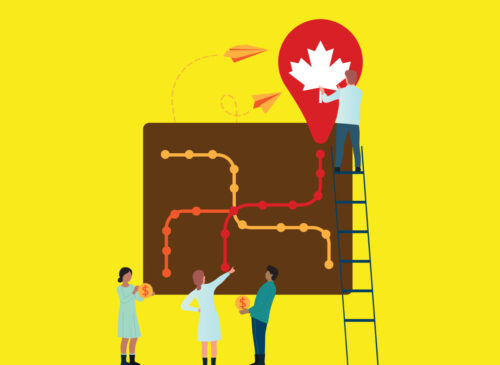
(Shutterstock)
Canada’s federal research granting agencies recently announced a review of the Tri-Agency Open Access Policy on Publications, with the goal of requiring immediate open and free access to all academic publications generated through Tri-Agency supported research by 2025.
To meet this requirement, the Canadian government should empower academic authors through the adoption of secondary publishing rights. These rights would ensure that authors can immediately “republish publicly funded research after its first publication in an open access repository or elsewhere,” even in cases where this is forbidden by publishers.
Tweaking the Copyright Act to include such rights would give academic authors the ability to make taxpayer-funded journal articles available to the public through open access upon publication.
Enabling Canada’s research to be openly accessible without barriers will contribute to the public good, helping to foster innovation and discovery.
Open access policy review
Research locked behind paywalls is an impediment to science, innovation and cultural progress. In the past, most research papers would only be accessible to individuals who pay to access research papers or who work or study at universities willing to pay for access. This model is changing, and many publications are now openly available to the public. However, authors are increasingly required to pay publishers in order to be published open access.
The current Tri-Agency Open Access Policy on Publications does require that authors make copies of funded journal articles freely available online, but allows for a 12-month embargo period where publishers get exclusive rights to the content and can keep it locked behind a paywall. That can mean significant delays in free access to vital research.
The policy review is overdue in Canada. In the European Union and the United States, governments have committed to immediate open access for publicly funded research.
Canada can learn from the experiences of these other jurisdictions, and create a framework that ensures equitable open access to publicly funded Canadian research.

(Shutterstock)
Article processing charges
In addition to allowing embargo periods, Canada’s current open access policy has fallen short of delivering in key areas and needs to adapt to changes in academic publishing.
For example, the Tri-Agency suffers from low rates of compliance with their open access policy when compared to other jurisdictions. OA.Report data shows publications funded by the Social Sciences and Humanities Research Council of Canada as having only 52 per cent compliance with the policy in 2023 so far.
It is unclear why authors do not comply with the policy. It might be that they misunderstand their obligations or that they simply cannot afford the high article processing charges (APCs) that they might need to pay to publish in their journal of choice. The result is that much publicly funded research remains unavailable to the public.
APCs are fees academic authors pay to be published in open access journals. Authors can be charged fees of $1,000 up to $13,000. Journals increasingly rely on APCs, making the cost of open access publishing prohibitively expensive for many authors.
Estimates indicate Canadian academic authors spent at least US$27.6 million on processing charges from 2015 to 2018, despite the preponderance of free-to-publish open access journals.
Authors don’t always have funds to cover these fees, and offloading them to university libraries through open access funds or transformative agreements is not sustainable and leads to inequitable publishing opportunities between large and small institutions.
In addition, scholars from the Global South have drawn attention to the inequitable nature of APC-based-publishing, while other models of funding open access journals are being extinguished.

(Shutterstock)
Secondary publishing rights
There are clear paths forward that enable more open access. While academic journal publishing is extremely profitable for publishing companies, the authors, editors and reviewers that form the backbone of the system are rarely compensated for their labour and face challenges negotiating fair publication agreements.
The Canadian Federation of Library Associations has recently proposed one partial solution: to provide secondary publishing rights to academic authors in Canada. The proposal is also endorsed by the Canadian Association of Research Libraries.
Secondary publishing rights have already been implemented in multiple European countries, with perhaps the most notable example being the Taverne Amendment in the Netherlands, which has seen the rate of open access top 80 per cent.
European countries’ implementations of these rights currently include embargo periods. However, the Association of European Research Libraries has released draft language for secondary rights without an embargo period that would allow for “lawful self-archiving on open, public, non-for-profit repositories.”
If Canada were to adopt a similar law in conjunction with revising the Tri-Agency policy, we could become a worldwide leader in open access scholarly publications.
Ultimately, more immediate open access at lower costs would mean we all have better access to information that could help us better understand the world around us, whether it is medical information, engineering innovations or new explorations of culture and history.![]()
Brianne Selman, Scholarly Communications & Copyright Librarian, University of Winnipeg and Mark Swartz, Scholarly Publishing Librarian, Queen’s University, Ontario
This article is republished from The Conversation under a Creative Commons license. Read the original article.










